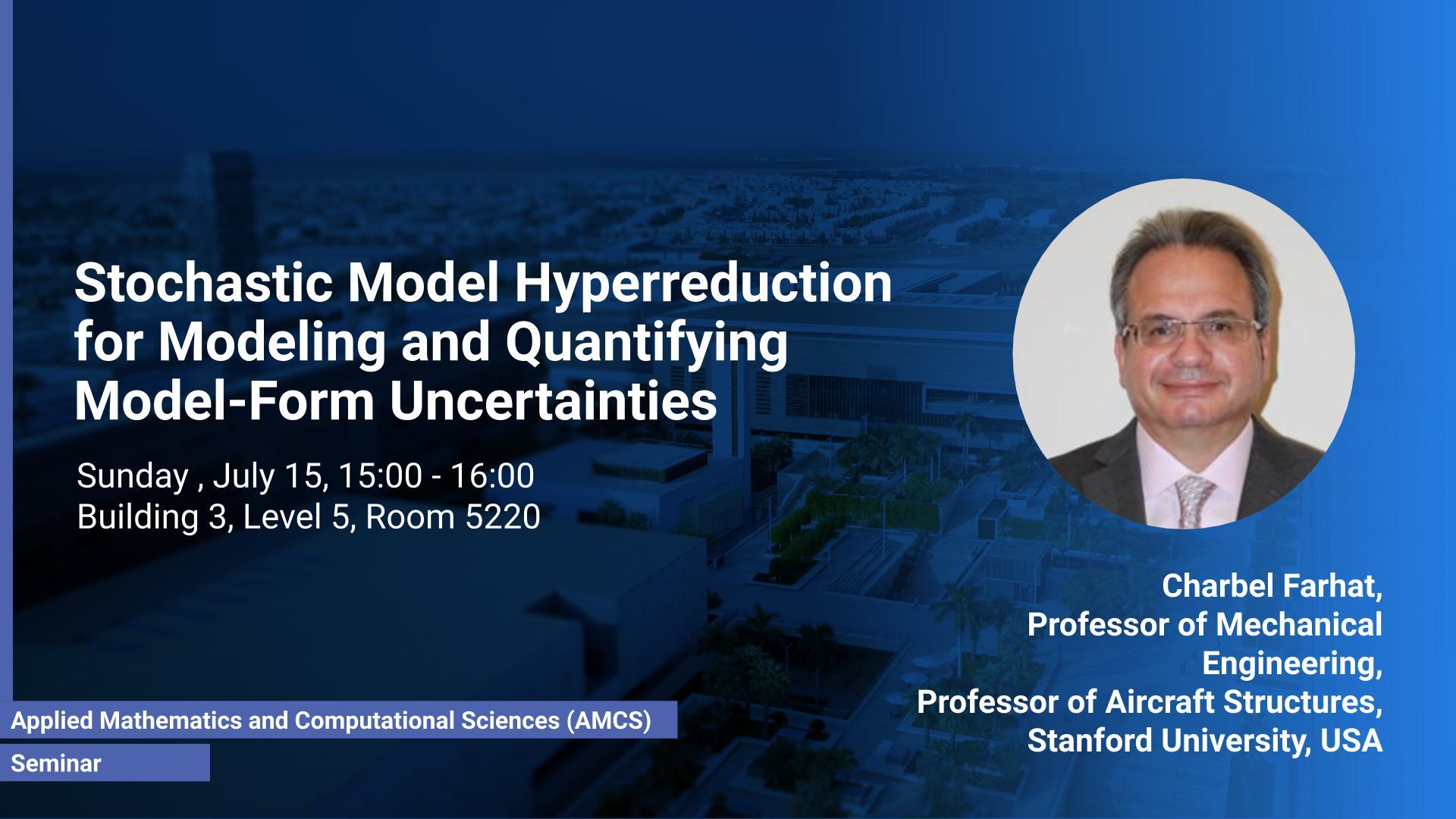Abstract
A feasible, nonparametric, probabilistic approach for modeling and quantifying model-form uncertainties associated with a High-Dimensional Computational Model (HDM) and/or a corresponding Hyperreduced Projection-based Reduced-Order Model (HPROM) [1,2] designed for the solution of computational mechanics problems is presented. It is based on the construction of a Stochastic HPROM (SHPROM) associated with the HDM and its HPROM using three innovative ideas [3]: the substitution of the deterministic Reduced-Order Basis (ROB) with a Stochastic counterpart (SROB) that features a reduced number of hyperparameters; the construction of this SROB on a subset of a compact Stiefel manifold in order to guarantee the linear independence of its column vectors and the satisfaction of any applicable constraints; and the formulation and solution of a reduced-order inverse statistical problem to determine the hyperparameters so that the mean value and statistical fluctuations of the quantities of interest predicted in real-time using the SHPROM match target values obtained from available data. If the data are experimental data, the proposed approach models and quantifies the model-form uncertainties associated with the HDM while accounting for the modeling errors introduced by model reduction. If on the other hand the data are high-dimensional numerical data, the proposed approach models and quantifies the model-form uncertainties associated with the HPROM. Consequently, the proposed nonparametric, probabilistic approach for modeling and quantifying model-form uncertainties can also be interpreted as an effective means for extracting fundamental information or knowledge from data that is not captured by a deterministic computational model and incorporating it in this model. Its potential for quantifying model-form uncertainties is demonstrated for two different applications. First, the natural vibration analysis of a small-scale replica of an X-56 type aircraft made of a composite material for which ground vibration test data are available. Second, nonlinear structural dynamics computations in support of what-if? problems associated with shape changes of an engine nozzle.
Brief Biography
Charbel Farhat is the Vivian Church Hoff Professor of Aircraft Structures, Chairman of the Department of Aeronautics and Astronautics, Director of the Army High-Performance Computing Research Center, and Director of the King Abdullah City of Science and Technology Center of Excellence for Aeronautics and Astronautics at Stanford University. His research interests focus on the development of mathematical models, advanced computational algorithms, and high-performance software for the design and analysis of complex systems in aerospace, marine, mechanical, and naval engineering. He is a member of the National Academy of Engineering, a member of the Royal Academy of Engineering (UK), a Fellow of AIAA, ASME, IACM, SIAM, and USACM, and an ISI Highly Cited Author in Engineering. He is also the recipient of many other professionals and academic distinctions including the Spirit of Saint Louis Medal and Lifetime Achievement Award from ASME, the Ashley Award for Aeroelasticity and the Structures, Structural Dynamics and Materials Award from AIAA, the Gordon Bell Prize and Sidney Fernbach Award from IEEE, the John von Neumann Medal from USACM, the Grand Prize from the Japan Society for Computational Engineering and Science, and the Gauss-Newton Medal from IACM. He was selected by the US Navy as a Primary Key-Influencer, flown by the Blue Angels during Fleet Week 2014, and appointed to the Air Force Science Advisory Board.
Refreshments: will be available at 2:45 pm.

